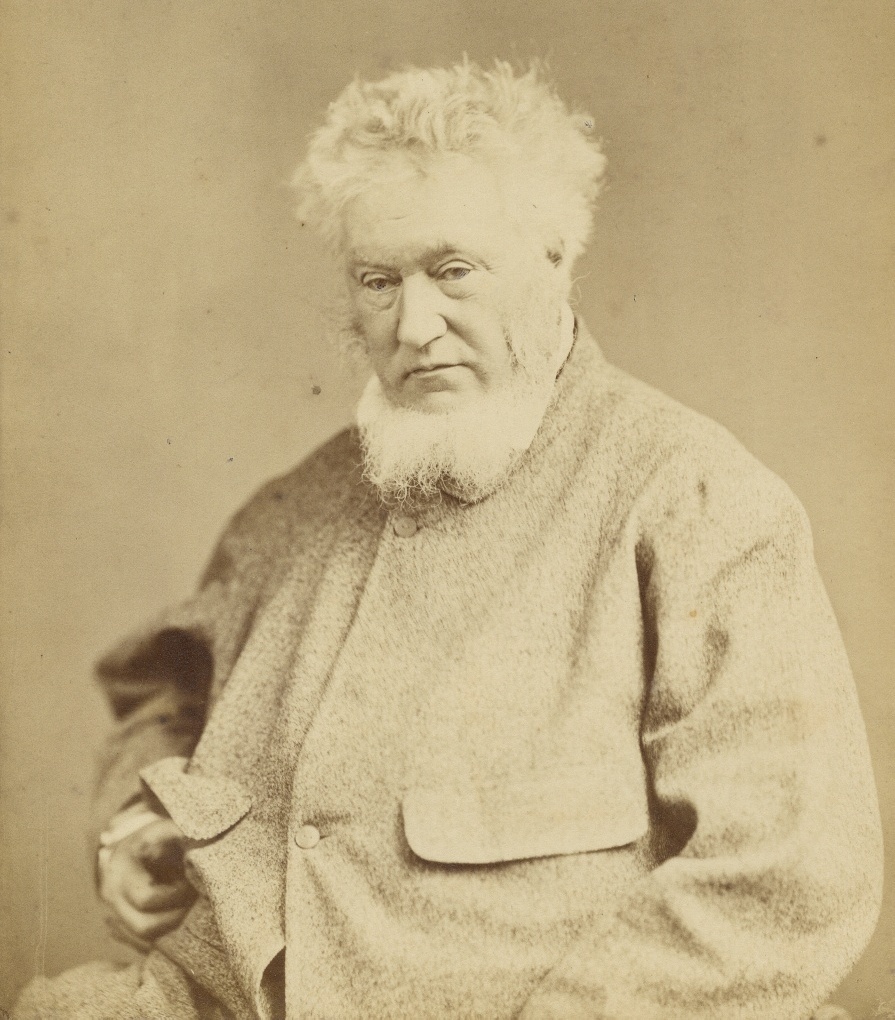The subject of our talk by Phillip Modiano in May was the artist and architectural critic John Louis Petit (1801-1868) who was also a prominent opponent of the Gothic Revival movement. In his day, Petit was regarded as a 'national treasure' and Phillip's objective is to recover his reputation as his paintings and sketches, whilst never intended for sale, have been largely ignored for 150 years.
The Gothic Revival (neo-Gothic) was given impetus through A.W. Pugin, George Gilbert Scott and John Ruskin. John Louis Petit, of Hugenot descent, was born in 1801, in Ashton-u-Lyme. After education at Eton and Trinity College, Cambridge, he took holy orders in 1826 and came to Lichfield as assistant curate at St Michaels Church. His next appointment was as curate at Bradfield and Mistley in Essex. He married in 1828 but left the church in 1834, returning to the Midlands and then to the family home in Lichfield to concentrate of his artistic and architectural studies (Although he did officate in 1849 at the marriage of his sister Maria in Lichfield Cathedral).
John Louis Petit's first book, published in 1841 was "Remarks on Church Arhitecture". He gave many speeches to the Society of Antiquarians and the newly formed R.I.B.A., also contributing papers to several architectural journals. Architecture had become a 'hot topic', based on the 'battle of the styles'. Scott was the great advocate of Neo-Gothic, working on over half of the country's cathedrals and many churches. Petit, in contrast, argued for originality, not 'copy architecture', encouraging symmetry, harmony and beauty in form and proportion.
Petit visited and painted both British and European churches. His art was influenced by Samuel Prout, a much admired professional artist who specialised in old continental buildings. Painting was dominated by the romantic style of J.W. Turner in the early 19th century. Petit's early monochrome style has been compared to de Wint's. With an independent income he painted for himself, not commercially. Shipping was a theme in these early years and his churches were often depicted as 'boat like'. Unusually he depicted the industrial scenes of the Black Country - including Wolverhampton which was then part of Staffordshire - before these became fashionable. His work gradually became more colourful, while making no attempt to beautify or romanticise. He concentrated on the essentials, capturing the building's character, with minimal sky and background washes.
Northern Gothic was regarded by Ruskin in his 'Stories of Venice' as savage, rude and wild. The antiquarians of the Anastatic Drawing Society were trying to preserve the original image, a style later made redundant by photography (the early photographer, Phillip Delamotte, was a friend of Petit). Petit executed fifteen examples of Lichfield Cathedral, taken from all angles. Other local examples included the windmill in Grange Lane and, in 1857, the excavation of Stowe Pool. He painted for pleasure, an almost 'unstoppable need'. The contemporary, John Buckler painted Lichfield as a topographer, whilst Turner painted as a romantic. Petit's style was between these extremes. He produced three major books, seven major papers and four minor books.
The participants in the 'battle of the styles' were pre-occupied in imposing their one correct style, the 'sacred middle pointed'. By the late 1840s Petit was regarded as the only architectural critic worthy of reading (quoting Professor Freeman, 1849). However he was considered an enthusiastic amateur by the Gothic architects who were attempting to discredit him in the columns of "the Builder". Despite this Scott later wrote that he found Petit's book 'Remarks on Church Architecture' a valuable text.
John Louis Petit only designed two buildings; the lost summer house called "Bumblekyte" (later "the Brambles") in Upper Longdon and St Phillip's Chapel at Caerdeon, Gwynydd, that he designed for his brother-in-law the Rev'd William Jelf. This building has recently been upgraded to Grade I for its special architectural merit.
In 1842 the key issues, for Petit, were beauty and originality in all styles; opposing destructive restoration. The revivalists regarded beauty as irrelevant and Gothic as the 'one style'. Sadly, Petit's reputation was destroyed by the ecclesiologists, William Morris, and later Nikolaus Pevsner.
Although his sister, Emma Gentile Petit, took care of John Louis' work during her lifetime, cataloging his work and even arranging for three of his articles to be published posthumously, later generations took little interest. The collection was abandoned in an old house in Surrey, later to be sold in job lots by Southeby's Billingshurst mixed with unsigned work by his sisters Emma and Susanna.
Our speaker, Phillip Modiano, is now working to revive John Louis Petit's reputation and to rescue his work from obscurity. His new book "Petit's Tours of Old Staffordshire" is available for sale at St Michaels and is a very readable account of Petit's work with many references to 19th century Lichfield. Last month's talk was a very welcome introduction to one of Lichfield's eminent, but largely forgotten, citizens.
Earlier the same day we were fortunate to be invited to a shorter talk in St Michaels Church, where we could also view the alabaster tablet commemorating Petit's uncle, Louis Hayes Petit, former MP for Ripon, who purchased Redcourt House on Tamworth Street in 1820 and settled the family there. John Louis Petit, his two younger brothers and four sisters are all buried in a large tomb in St Michaels churchyard. There is also a large memorial to his brother, Lt Col. Peter John Petit, in the South Transcept of Lichfield Cathedral.
Lorna Bushell
May 2019

John Louis Petit, c.1860;
Courtesy of the Trustees of the William Salt Library